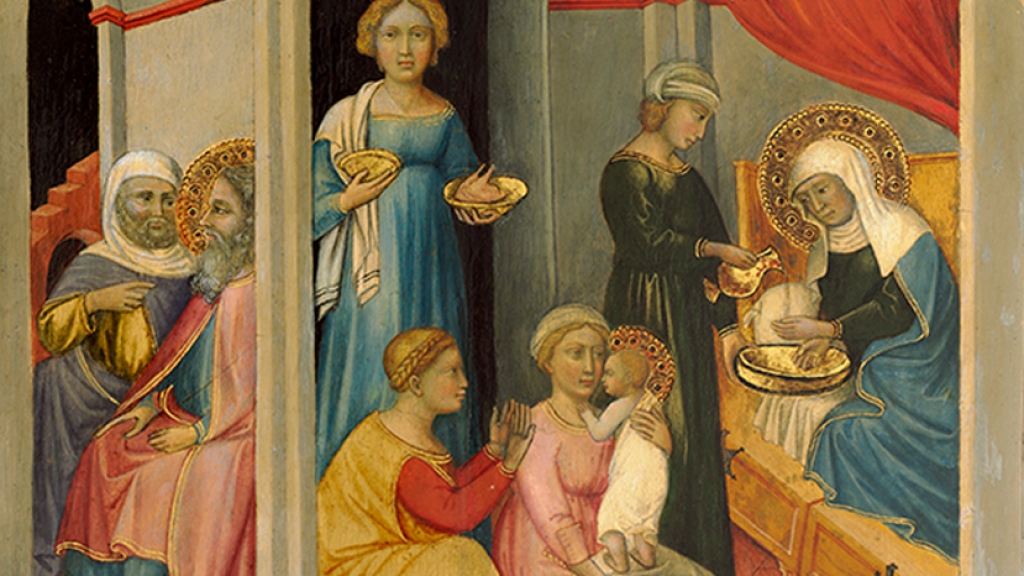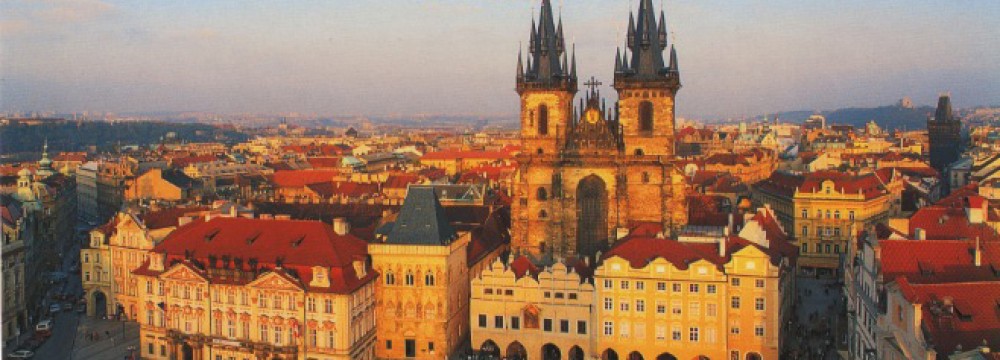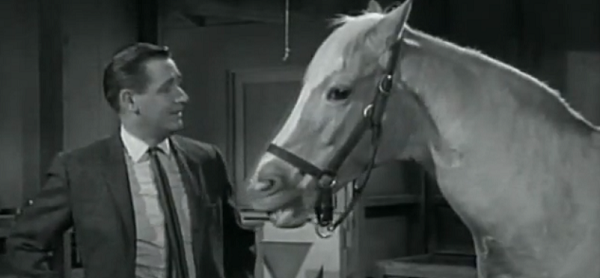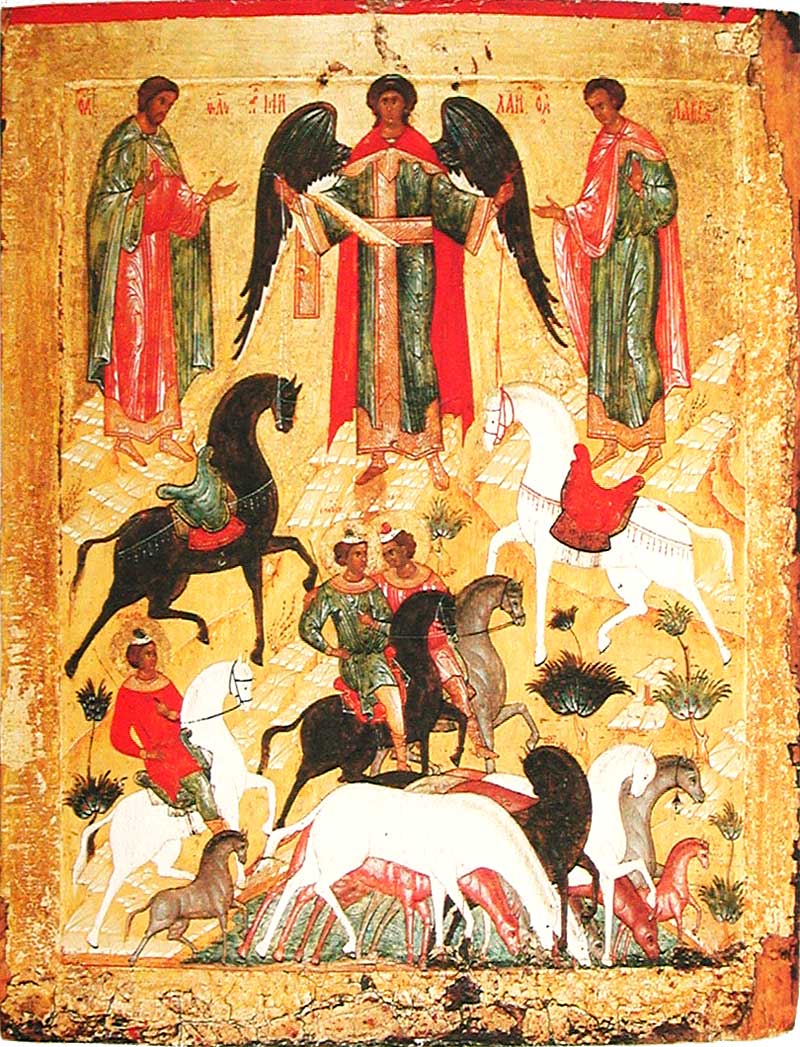
The Nativity of the Virgin by Andrea di Bartolo (1360/70 – 1428). He was an Italian painter, stained glass designer, and illuminator of the Sienese School mainly known for his religious subjects. He was active between 1389–1428 in the area in and around Siena. (This painting hangs in the National Gallery)
A feast in honor of the Blessed Virgin Mary’s birth seems to have been held in Syria and Palestine in the sixth century. This celebration was accepted and adopted by the Roman Church at the end of the seventh century. It spread very slowly through the rest of Europe but by the twelfth century, it was observed throughout both Western and Eastern Europe as one of the major feasts of Mary. It remained a holy day of obligation among Roman Catholics until 1918.
In many places of central and eastern Europe the Feast of Mary’s Nativity is traditionally connected with ancient farming customs and celebrations, much like Thanksgiving Day in the U.S. September 8 itself marks the end of the summer in popular reckoning; September 8 also marks the beginning of “after-summer” and the start of the fall planting season. A blessing of the harvest and of the seed grains for the winter crops is performed in many churches.
In central and northern Europe, according to ancient belief, September 8 is also the day on which the swallows leave for the sunny skies of the South.
In the Alps, the “down-driving” (Abtrieb) begins on September 8. Cattle and sheep are taken from their summer pastures on the high mountain slopes where they have roamed for months, and descend in long caravans to the valleys to take up their winter quarters in the warm stables. The animals at the front of the procession wear elaborate decorations of flowers and ribbons; the rest carry branches of evergreen between their horns and little bells around their necks. The shepherds and other caretakers accompany the procession, dressed in all their finery and decorated with Alpine flowers, yodeling, and cracking whips to provoke a multiple echo from the surrounding mountain cliffs. Arriving at the bottom of the valley in the evening, they find the whole village or town awaiting them in a festive mood. Ample fodder is served to the cattle in the stables, and each family has a banquet that includes the farm hands. In some sections of Austria all the milk obtained on Drive-Down Day is given to the poor in honor of our Lady, together with the meat, bread, and pastries left over from the feast in the evening.
If, however, the farmer who owns the cattle has died during the summer, the “downdriving” is performed without decorations and in silence. Each animal then wears a mourning wreath of purple or black crepe.
In the wine-growing sections of France, September 8 is the day of the grape harvest festival. The owners of vineyards bring their best grapes to church to have them blessed; in Greece, the first grapes are ripe a month earlier so the Greeks bring the grapes into church to be blessed on August 6; the French have the grapes blessed and afterward tie some of them to the hands of the statue of the Virgin. The Feast of Mary’s Nativity is called “Our Lady of the Grape Harvest” in those sections, and a festive meal is held at which the first grapes of the new harvest are consumed.


